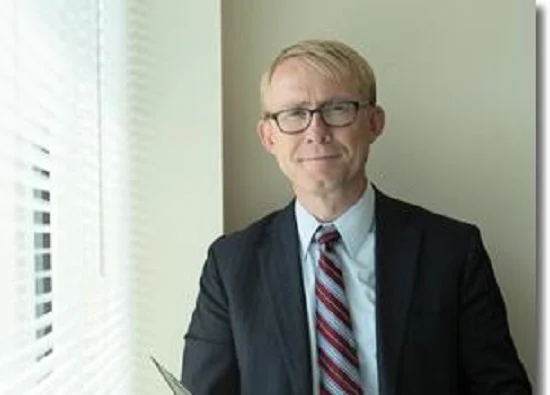Transition Management Roundtable 2023: ESG transition
13th April, 2023|Global Investor

Part four of the 2023 edition of our Transition Management roundtable discusses the industry's adaptation to the requirements for ESG transition.
ESG Transitions
In early December 2022, Global Investor brought together the industry’s leading transition managers and consultants to discuss some of the key issues affecting clients including costs, the impact of interim solutions, the evolution of data analysis, and how business models are adapting to market conditions.
A portion of the 2023 Transition Management Roundtable is available in the video above. See below for a transcript of the highlights.
Amelie Labbe: In what way is the industry evolving to meet the demands and requirements of the ESG transition?
Andy Gilbert: Before we look at how the industry is evolving, I think we should spend some time thinking about how ESG is evolving.
The first evolution focuses on sustainability considerations. We have seen clients thinking about how this philosophy can extend to their whole portfolio and asking how they can think about sustainability and ESG, not just across their equity portfolio but across their fixed income, credit, high yield, emerging market and debt portfolios.
ESG as a concept is still evolving in the minds of clients. In the past, adopting ESG may have simply meant excluding certain sectors or securities and certain indices were constructed to address that. At a point in time, clients may have been thinking low carbon.
More recently, the focus has been around net neutral/ Paris Aligned with benchmarks, portfolios and strategies designed to reflect that. This demonstrates how ESG has been evolving in the minds of clients. But what does that mean from a transition management perspective?
It has become increasingly important for the transition management industry to provide the right level of support to ESG transitions, whether that is providing insights on factors, the impact of different benchmarks, or scoring.
We also need to be on top of regulatory requirements. The ability to implement governance structures will continue to be critical: for example, coding restricted lists, and the correct interpretation and implementation of client guidelines. We need to be able to put a framework around the portfolio.
ESG isn’t a one-size-fits-all and the transition management industry needs to be flexible in tailoring and customising its approach.
David Edgar: I don’t see ESG suddenly resulting in a massive transition. I think a lot of asset managers will move their portfolios to their new benchmark, whatever it may be. I am sure we will see lots of new funds launching and assets moving from old funds to new funds, but I don’t see any massive uptick in transition work over the next two years due to ESG although it will be another thing for transition managers to have to think about and deal with.
Chris Adolph: I was going to ask around the table in terms of whether people had seen clients asking for specific ESG reporting, because as Cyril points out we are producing the portfolio of their target manager, so the end result is a manager who has constructed something in line with what the client might get.
During that journey we are moving closer to that portfolio all the time, so it is a question of what is our role here, other than to deliver what the client has already agreed with the manager. I think it is a review of the exclusions and (especially if you are dealing in funds in Luxembourg) various regulations. The evolution of the systems that we use really helps here in terms of coding and making sure we can manage all of those exclusions on a real time basis.
David Edgar: There has been some discussion about whether if everyone is moving in the same direction and having to sell the same stocks and buy the same stocks we see trading anomalies within the market, but I’m not aware that there is anything obvious happening there.
Chris Adolph: Consider how many years we have been talking about ESG. When those conversations were happening from an asset management perspective it was all a question about clients, what potential alpha are you giving up by doing this because potentially you are forcing your pension fund to make changes based on certain criteria. It was then a question of are we giving something up?
Now the conversation isn’t about what you are giving up, it is about constructing portfolios that people believe are going to outperform going forward.
Ashish Patel: We are almost entering this period of ESG 2.0 in terms of redefining and reclassifying funds. Just this week we have seen Article 9 designation being removed from about $125 billion of assets under management.
For us as transition managers it is about identifying what are ESG transitions, as David said, and it can quite quickly become a momentum trade, so we have to be very conscious of the sector biases, those signature names within certain ESG portfolios that can cause liquidity constraints.
When you get down to that level of idiosyncratic risk it becomes very difficult to hedge and transition from legacy to target, so that is where the value add is as transition managers, using our skillset and knowledge base as we apply it holistically to portfolio and risk management, but though a more specific lens with ESG.
Paul McGee: I agree with that point entirely. We have helped a number of clients with ESG fund launches in past year and the common theme is highly concentrated portfolios and putting big positions into single stocks that can be very volatile. So you need to have a carefully designed trading strategy and look at your biggest risk contributors. Some well-known stocks that feature regularly in ESG portfolios can move 5%, 10% or even 15% on any given day and 30-stock global, highly concentrated portfolios are common theme.


